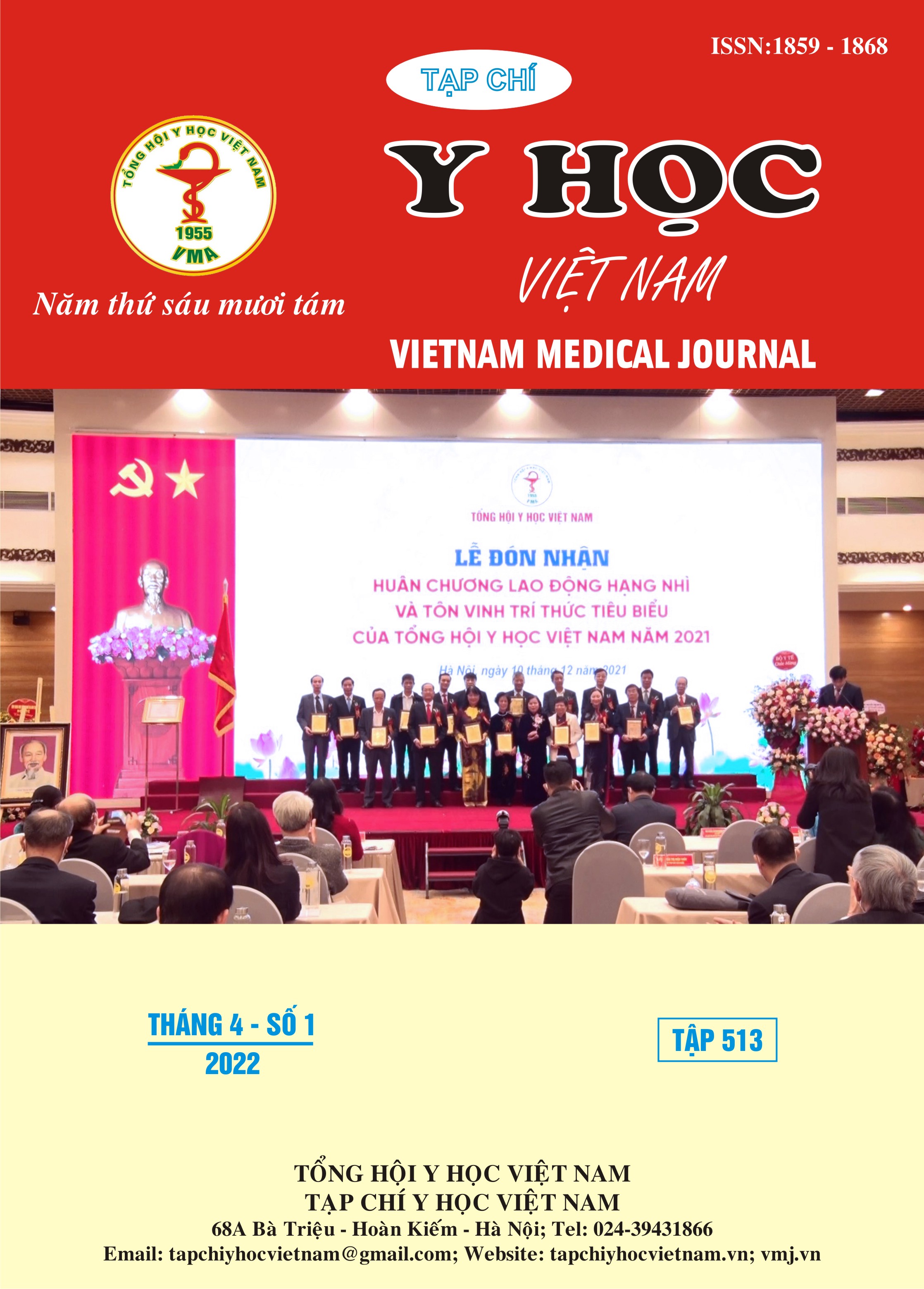OMPARISON OF NUTRITIONAL RISK SCREENING WITH THE NEW GLIM CRITERIA FOR MALNUTRITION AND ASSOCIATION WITH SARCOPENIA IN ELDERLY COVID-19 PATIENTS TREATED AT INFECTIOUS FIELD HOSPITAL NO.5G
Main Article Content
Abstract
Objectives: To compare a popular nutritional screening tool with the new Global Leadership Initiative on Malnutrition (GLIM) diagnostic criteria in elderly hospitalized COVID-19 patients. Methods: 182 elderly COVID-19 patients admitted to the critical care ward, Infectious Field Hospital No.5G were evaluated consecutively upon admission using the nutritional risk screening tool 2002 (NRS-2002), undernutrition according to GLIM criteria, and assess the risk of sarcopenia by SARC-F tool. Results: Malnutrition rate 46.7% according to GLIM criteria. The sensitivity and specificity of NRS-2002 in detecting malnutrition were 98.8% and 56.7%, respectively. The concordance with the GLIM criteria was 54.0%. NRS-2002 was a moderate-value screening tool for the diagnosis of malnutrition. Patients at nutritional risk according to the NRS-2002 were more likely to present with sarcopenia than patients at low risk (OR: 4.04; 95% CI: 1.31-12.4). Conclusion: NRS-2002 is valuable in detecting malnutrition in hospitalized elderly COVID-19 patients diagnosed by new GLIM criteria. Furthermore, elderly COVID-19 patients at high risk of malnutrition according to NRS-2002 are at increased risk of present with sarcopenia. Nutritional status should be determined by NRS-2002 in elderly patients with COVID-19 at hospital admission.
Article Details
Keywords
Nutritional status, sarcopenia, Nutritional risk screening, Elderly COVID-19 patients
References
2. Hu X, Zhang L, Wang H. et al. (2017). Malnutrition-sarcopenia syndrome predicts mortality in hospitalized older patients. Scientific reports, 7(1): 1-9.
3. Cederholm T, Jensen GL, Correia MITD. et al. (2019). GLIM criteria for the diagnosis of malnutrition–A consensus report from the global clinical nutrition community. Journal of cachexia, sarcopenia and muscle, 10(1): 207-217.
4. Pironi L, Sasdelli A.S, Ravaioli F. et al. (2021). Malnutrition and nutritional therapy in patients with SARS-CoV-2 disease. Clinical nutrition, 40(3): 1330-1337.
5. Kondrup J, Rasmussen H.H, Hamberg O. et al. (2003). Nutritional risk screening (NRS 2002): a new method based on an analysis of controlled clinical trials. Clinical nutrition, 22(3): 321-336.
6. BỘ Y TẾ (2021). Hướng dẫn chẩn đoán và điều trị COVID-19.
7. Cruz-Jentoft A.J, Baeyens J, P,, Bauer J.M. et al. (2010). Sarcopenia: European consensus on definition and diagnosisReport of the European Working Group on Sarcopenia in Older PeopleA. J. Cruz-Gentoft et al. Age and ageing, 39(4): 412-423.
8. Allard J.P, Keller H, Gramlich L. et al. (2020). GLIM criteria has fair sensitivity and specificity for diagnosing malnutrition when using SGA as comparator. Clinical Nutrition, 39(9): 2771-2777.


